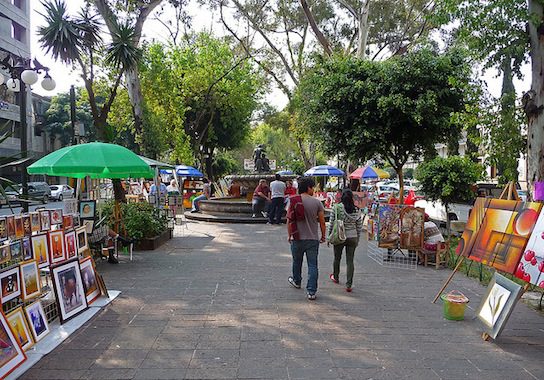Do You Care Where Your Art Comes From?

Art may be the next frontier of the localism movement: local C.S.A. (community-supported agriculture) programs are branching from agriculture into the arts, according to a Sunday New York Times story. The programs have developed a shareholding model to support local studios and artists.
Ironically, Amazon just announced yesterday that it is re-opening its Fine Art platform – selling everything from Salvador Dali works to living room decor. The contrast between this international selling giant and the C.S.A.’s localism efforts hearkens to wars between Amazon and independent booksellers. One wonders what effect “Amazon Art” will have on these community projects.
The C.S.A. believes their system is an “organic alternative” to the commercial gallery. Participants range from youth to older couples “interested in reinvesting in their community and getting involved with something.” The programs acquaint interested buyers with emerging artists and build connections within the local art community:
“The goal, borrowed from the world of small farms, is a deeper-than-commerce connection between people who make things and people who buy them. The art programs are designed to be self-supporting: Money from shares is used to pay the artists, who are usually chosen by a jury, to produce a small work in an edition of 50 or however many shares have been sold.”
Amazon Art, in contrast, offers an art collection replete with original and limited edition pieces from more than 150 dealers and 4,500 artists. Amazon Marketplace’s Vice President Peter Faricy told the New York Times, “Amazon Art gives galleries a way to bring their passion and expertise about the artists they represent to our millions of customers.”
For those who merely want to cover a wall, Amazon Art will serve their purposes well. But if shoppers want a story behind the paint, independent studios and local artists may better serve the purpose. For instance: every summer in Sun Valley, Idaho, the Kneeland Gallery hosts a motley crew of artists for a plein air painting event. The artists congregate in the Wood River Valley, spread their easels across the rugged landscape, and spend the next few days painting aspens and mountains. Locals and tourists observe artists in action, and buy paintings still wet.
The Kneeland Gallery and C.S.A. support a concept of art that transcends decorative purposes. They advocate art as experience and connection. Amazon Art, however, provides a platform for those who merely want art. This contrast is reminiscent of the Amazon book controversy: independent bookstores offer a unique reading and buying experience. Some book-buyers, however, prefer shopping in the cheapest and most expeditious fashion possible.
Perhaps because of its visual medium, art seems even more valuable as an experiential purchase than as an online buy. Books contain a built-in story and experience. Paintings, however, have more inferred meaning and depth. Art buyers who meet the artist or watch their art being created will have a deeper connection to the work. Neither purchasing method is “right” or “wrong” – but art aficionados must determine the importance of artistic experience and relationship in their purchasing decisions.
Comments